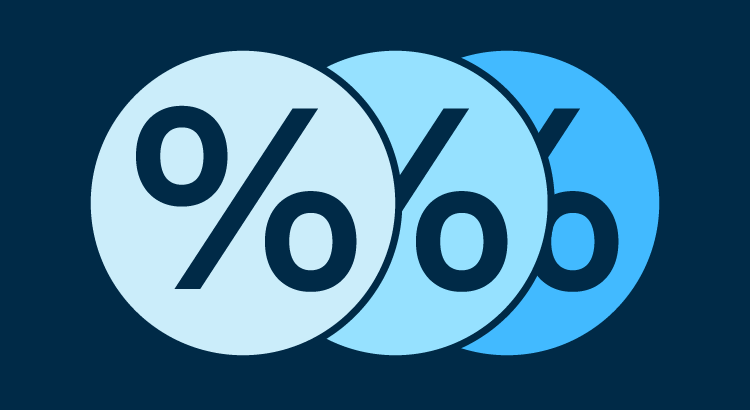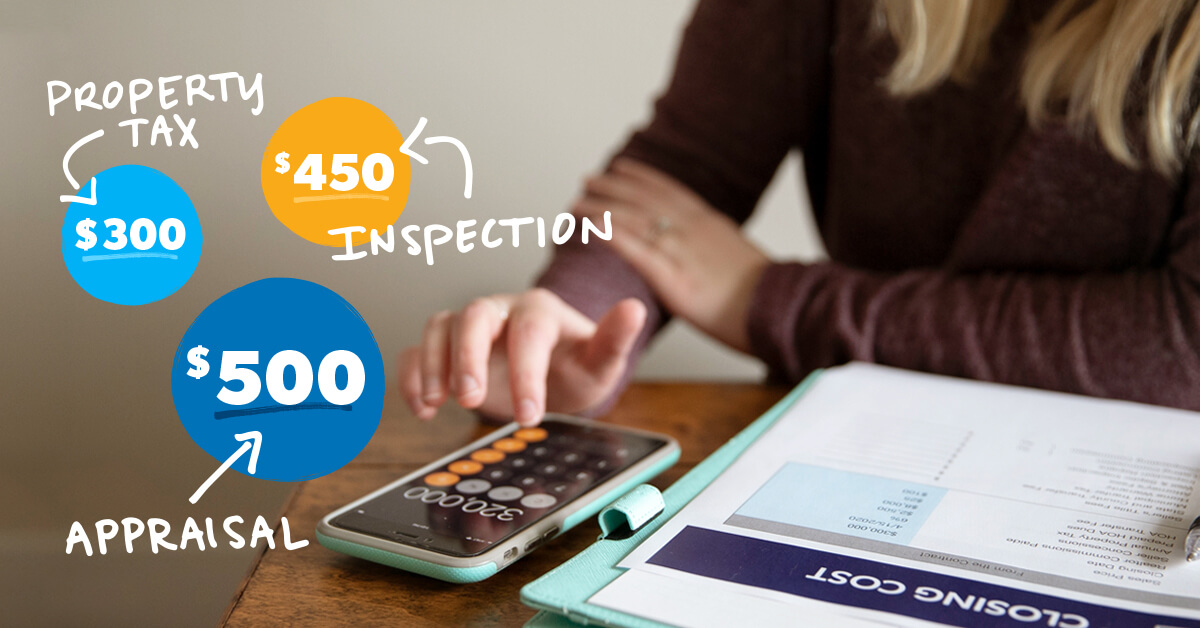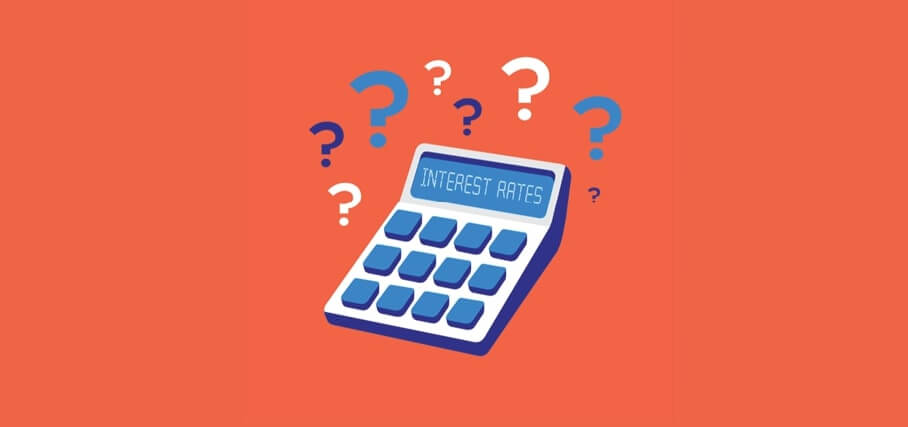To Buy Now or Latter - Expert Analysis
I once met an experienced real estate investor who said to me the best time to buy is when you are ready, and I agreed with her assertion. ...
READ POSTI once met an experienced real estate investor who said to me the best time to buy is when you are ready, and I agreed with her assertion. ...
READ POSTYou may have been thinking of selling your house this spring, now is the perfect time to start getting it ready. With the market gearing ...
READ POSTAs the weather warms up and flowers begin to bloom, the real estate market traditionally sees an uptick in activity during the spring ...
READ POSTThe First-Time Home Buyer Incentive helps qualified first-time homebuyers reduce their monthly mortgage payments without adding to ...
READ POST
The First-Time Home Buyer Incentive helps qualified first-time homebuyers reduce their monthly mortgage payments without adding to their financial burdens.
The First-Time Home Buyer Incentive is a shared-equity mortgage with the Government of Canada, which offers:
The shared equity component of the incentive means that the government shares in both the upside and downside of the property value, up to a maximum gain or loss equal to 8% per annum (not compounded) on the Incentive amount from the date of advance to the time of repayment.
By obtaining the Incentive, the borrower may not have to save as much of a down payment to be able to afford the payments associated with the mortgage. The effect of the larger down payment is a smaller mortgage, and, ultimately, lower monthly costs.
The homebuyer will have to repay the Incentive based on the market value of the home at the time of repayment equal to the percentage (for example, 5% or 10%) of the original home value used to determine the Incentive, up to a maximum repayment amount equal to:
(i) where the home’s value has appreciated, the Incentive plus a maximum gain of 8% per annum (not compounded) on the Incentive amount from the date of advance to the time of repayment; or
(ii) where the home’s value has depreciated, the Incentive minus a maximum loss of 8% per annum (not compounded) on the Incentive amount from the date of advance to the time of repayment.
The homebuyer must repay the Incentive after 25 years, or when the property is sold, whichever comes first. The homebuyer can also repay the Incentive in full any time before, without a pre-payment penalty.
The First-Time Home Buyer Incentive has been discontinued.
The deadline for new or updated submissions for the First-Time Home Buyer Incentive is midnight ET on March 21, 2024.



Are you looking to end your Tenancy agreement with your tenant for your own use as the landlord? There is a way to do it right. In this blog I will be sharing some important insights for your learning.
A landlord may issue a Two Months Notice if the landlord wishes to regain possession of the rental unit, in good faith, for the landlord’s own occupancy or for occupancy by one or more of the landlord’s close family members.
First, let's define terms:
“Close family member” includes the landlord’s parents, spouse and children as well as the landlord’s spouse’s parents and children. Notably, neither the landlord’s siblings nor cousins fall within the definition of this term. However, if the landlord is a family corporation, the principle shareholder’s brother, sister or close family member who holds voting shares would be eligible to take over occupancy of the rental unit, as would the principle shareholder.
Where the tenancy is on a month-to-month basis, the landlord’s notice is effective not earlier than two months after the date the tenant receives the notice and its effective date must be on the day before the day of the month that rent is normally due. For example, if a tenant’s rent is due on the first day of each month and the landlord intends to evict the tenant by July, the landlord may seek to terminate the tenancy on June 30th and, if so, will have to provide the tenant with their notice by April 30th.
Where the tenancy is for a fixed-term, in addition to the rules described above, the effective date of the notice may not be earlier than the date specified as the end of the fixed-term.

The grounds for eviction require the landlord to be acting in good faith. Practically speaking, this means that the landlord must be acting with an honest intention and with no ulterior motive to defraud the tenant or to seek an unconscionable advantage.
In addition to the two months’ notice, a landlord seeking to end a tenancy to regain possession of the rental unit must provide the tenant, before the effective date of the notice, with monetary compensation equivalent to one month’s rent payable under the tenancy agreement. However, instead of having the landlord issue a separate payment for such compensation, the tenant may elect to simply withhold payment of rent for the final month of the tenancy.
Once served with a Two-Month Notice to End Tenancy, the tenant may challenge it by applying for dispute resolution within 15 days after receiving the notice. If the tenant fails to take any action within 15 days, the tenant is presumed to have accepted that the tenancy ends on the effective day of the landlord’s notice and must vacate the rental unit by that date.
Finally, if the landlord fails to take steps to accomplish the stated purpose for ending the tenancy (ie. to personally occupy or have a close family member occupy the rental unit) within a reasonable period after the effective date of the landlord’s two-month notice or if the rental unit is not used for that stated purpose for at least 12 months beginning within a reasonable period after the effective date of the notice, the landlord must pay the tenant a penalty equivalent to twelve-times the monthly rent payable under the tenancy agreement.
However, if the Residential Tenancy Branch determines that “extenuating circumstances” prevented the landlord from fulfilling their obligation under the Act to occupy the rental unit within a reasonable period of time after the effective date of the notice and/or for a minimum period of 6 months, the landlord may be excused from this requirement.
Thank you for taking time to read!
Should you need more guidance on how to proceed with any landlord tenant issues, please reach out to me directly on 672 998 2220

We will be discussing the trends and predictions for the real estate market in the year.
As 2024 kicks off full time, many factors are influencing the housing market, including interest rates, economic indicators, and demographic shifts. I'll be diving into what experts are forecasting for the year ahead and how it may impact you whether as a home buyer or seller.
Whatever category you find yourself, a first-time homebuyer, a real estate investor, or simply curious about the future of the housing market, this report will provide valuable insights and information to help you make informed decisions. Let's dive into it:
While we can't really forecast the future, we can use as it saw it's past share of twists and turns just as the housing market shifted.
Well, because prices are driven by supply and demand and we still have a low supply of inventory in the market, this means there will be upward pressure on home prices. Already there are slight home price gains. Somewhat easing inventory, slightly increasing transactions volume. All in all things are looking up for home prices are expected to see small but steady increases every year through 2028.
And while the percent of appreciation may not be as high as it was in recent years, what’s important to focus on is that we’ll see prices rise, not fall, for at least the next 5 years with 2024 looking at about a 2.6% increase. If you were worried home prices are going to fall, this is a big takeaway. Even though prices vary by local area, experts project they’ll continue to rise across the country Canada for years to come at a pace that’s more normal for the market.
With that in mind, bringing in these national insights as well as what’s happening in our Fraser Valley local market will help you see the bigger impact.
So, as a seller, selling your house appropriately so you can catch the eyes of serious buyers is important, especially in this mortgage rate environment. For buyers, with supply still tight, buyers will need to be flexible and willing to meet sellers halfway.
The past few years saw a lot of volatility in mortgage rates. Which leaves many wondering... what will happen with them in 2024? More than anything else, last year’s housing market was defined by high mortgage rates, reaching a 23-year high. But we’ve seen relief in the past few months as the recent Bank of Canada rate nouncements has made them flat e slowly trended down.
So, will mortgage rates continue to decline in 2024? No one can say for certain, but here’s what we know based historical trends. There’s a long-standing relationship between mortgage rates and inflation. Basically, when inflation is high, mortgage rates tend to follow suit.
Over the past year, inflation was up, so mortgage rates were as well. But inflation is easing now. And this is why the Bank of Canada has recently paused their rate hikes, which means many experts believe mortgage rates will continue their downward trend.
In fact, we’ve already started to see this decline in recent months. While the downward trend of both inflation and mortgage rates is promising, what you will have to brace for is that volatily is likely to continue going in 2024. Some ongoing variation is to be expected, but the anticipation is we’ll continue to see a downward trend this year.
Last year saw the lowest amount of homes sold in a decade. So, will we see activity pick up or are we in for another slower year? The strains on inventory due to rising homes prices as well as mortgage rates were felt nationwide this past year. Terms like “rate lock” and “affordability crisis” were prominent in headlines and articles about reasons why people had put their buying or selling plans on hold.
The short answer is no. While you may see headlines saying inventory is up, data also shows there are still signifcantly fewer homes for sale than there would usually be in a more normal market. However, what we’re seeing most is that this has become very hyper local. And while some cities in BC are seeing inventory declines, many are seeing the opposite: steady month over-month growth.
The market was no doubt thrown a lot of curveballs this year - namely high mortgage rates impacted by a wide variety of factors. However, as we start to see inflation cool and mortgage rates come down, it’s possible that prices will shoot up. Plus, it’s really not a matter of if but when we start to see that buyer and seller activity kick back up. So, the question becomes, what’s going to make an impact on those projections?
It all goes back to - you guessed it - mortgage rates.And although mortgage rates may remain volatile, their recent trend combined with what experts are saying indicate they could continue their downward trend in 2024. That would improve affordability for buyers and make it easier for sellers to move since they won’t feel as locked-in to their current, low mortgage rate.
Now that You Know what the market will look like in 2024, will you be willing to make the move?
Let's talk if you need some courage to take action!
![First Things First: Getting Pre-Approved for a Mortgage [INFOGRAPHIC]](/wps/rest/64107/post/8118515/image.jpeg)
Thank you for taking the time read!

In this simple steps to Mortgage Application for First Time Home Buyers I will walk you through the information required when applying for a mortgage as a first time home buyer.
Purchasing your first home can be an overwhelming process, but we are here to simplify it for you. From gathering necessary documents to understanding the different types of mortgages available, I've got you covered.
Don't let the mortgage application process intimidate you - with the right guidance, you can navigate it smoothly. Let's dive in and learn everything you need to know about applying for a mortgage as a first time home buyer.
For your interest, these are the information that is normally required:
(You'll need to provide information for each person to be included on application)
Your Full Name:
Email (for each person):
Social Insurance #:
Birthdate:
Address:
Marital status:
Are you a Canadian Citizen or Permanent Resident of Canada?:
Do you own or rent your current home?:
Driver's license # and expiry date
Current monthly rent:
# of years at present address:
Your phone #:
Previous address (if at present address for less than than 2 yrs):
Email address:
Current Employer & phone:
Occupation:
# years with present employer:
Income (T4 income for past two years):
![How To Win as a Buyer in a Sellers’ Market [INFOGRAPHIC]](/wps/rest/64107/post/8118516/image.jpeg)

Thank you for taking the time to read through.

The Bank of Canada maintained its overnight rate at 5 per cent this morning.
In the statement accompanying the decision, the Bank noted that economic growth is slow, wage pressures are easing, and the economy overall appears to be in a state of modest excess supply. On inflation, the Bank cited that shelter costs remain the largest contributor to inflation and that it expects headline CPI inflation to remain close to 3 per cent in the first half of this year before gradually falling back to its 2 per cent target.
March 6th 2024 - This morning's decision was much more about what the Bank is signaling for future meetings than the decision itself. All attention will now shift to April 10th, the Bank's next meeting and the first in which a rate cut is a real possibility. Although the economy flirted with recession in 2023, it has so far managed to avoid a lengthy contraction in output. However, economic growth does appear rather anemic and given substantial progress on bringing inflation toward 2 per cent, it is clearly time for the Bank of Canada to begin easing policy. We expect that the Bank will eventually lower its overight rate by 100 basis points this year, with the first rate cut happening in April or June.
There are interesting days ahead. If you have been on the sideline looking to sell or buy and you need some clarification on how to proceed, please reach out to me directly by text 672.998.2220 I'll be glad to answer all your burning questions...:)
Thank you!
For further readings please click here

Are you tired of constant home maintenance issues? You're not alone. Here are some simple hacks every homeowner should know to make their lives easier.
One of the most common issues homeowners face is a clogged drain. To easily unclog it, pour a mixture of vinegar and baking soda down the drain.
If you have squeaky doors, spray some WD-40 on the hinges for a quick fix.
To remove stubborn water stains on faucets, use a mixture of lemon juice and baking soda.
For a quick way to clean your microwave, place a bowl of water and vinegar inside and heat it up for a few minutes. The steam will loosen any dried-on food for easy cleaning.
To prevent dust buildup on ceiling fan blades, use a pillowcase to cover the blade and slowly pull it off. This will trap the dust inside the pillowcase.
By following these simple hacks, you can save time and money on home maintenance. Thanks for reading!
If you'll love to ask some specific real estate questions, you can reach out directly to me: 672.998.2220

Selling your house this spring? One of the great tips for sellers is spring cleaning and decluttering. For home sellers looking to sell your home this spring, here are some ultimate spring cleaning and decluttering tips to help you impress potential buyers and get your home sold quickly, not only that but also for top dollar!
First, start by decluttering each room. Remove any unnecessary items, pack away personal belongings, and donate or sell anything you no longer need. A clutter-free space will make your home feel more spacious and inviting to buyers.
Next, focus on cleaning every inch of your home. Dust and wipe down surfaces, deep clean carpets, and scrub bathrooms and kitchens. A clean home not only looks more appealing but also gives the impression that the property has been well-maintained.
Don't forget to tackle those neglected areas like closets, garages, and basements. Organize storage spaces to show off their full potential and make them look more spacious. Potential buyers will appreciate seeing the extra storage space.
Again, add some finishing touches to enhance the overall appeal of your home. Fresh flowers, a new doormat, and a fresh coat of paint can go a long way in making a great first impression.
Follow these spring cleaning and decluttering tips, and you'll be well on top of things!
In fact, as the weather warms up and flowers start to bloom, spring is the perfect time to tackle those cleaning and decluttering tasks you’ve been putting off. If you’re planning to sell your home, this is also a crucial step to make your property more appealing to potential buyers.
So, here are great tips to help you get started on your spring cleaning and decluttering journey:

Before you dive into cleaning and decluttering, take some time to create a plan. Make a list of all the areas in your home that need attention, prioritize tasks, and set a timeline for completing them.

Pay special attention to high-traffic areas such as the living room, kitchen, and bathrooms. These areas are often the first to show signs of wear and tear and can benefit from a thorough cleaning and decluttering.
When selling your house, cleaning is important and when it comes to cleaning, start at the top of each room and work your way down. Dust ceiling fans, light fixtures, and shelves before moving on to furniture and floors. This will help ensure that you don’t miss any spots. It's also a huge home improvement clue.
Curb appeal is very important when selling your home, it gives your real estate a special look from the outside thatbmakss it attractive, so please don't neglect it. These are where to focus:
1- Clean the windows
2- Pressure wash siding
3- Clean walk ways
4- Groom landscaping
5- Tidy up side walks

All these will always make a great first impression with any potential buyers, take my word! These are powerful selling tips and tricks you don't want to ignore for a top dollar sale.
If you’re short on time or energy, consider hiring professionals to help with your spring cleaning and decluttering. A cleaning service can tackle the more difficult tasks, leaving you with more time to focus on other aspects of selling your home.

As you clean and declutter, stay organized by using bins, baskets, and labels to keep track of items. This will not only make the process more efficient but will also make it easier to pack up when it’s time to move.
Once you’ve completed your spring cleaning and decluttering, make an effort to keep your home clean and clutter-free while it’s on the market. This will help ensure that it’s always ready for showings and will make it more appealing to potential buyers.
.jpeg) Now, are you ready to make the move? Give Me A Call Today! I am glad, eager and excited to help you sell your home and for top dollar!
Now, are you ready to make the move? Give Me A Call Today! I am glad, eager and excited to help you sell your home and for top dollar!
Let's talk.

Ready to take the leap into homeownership? Congratulations on making this exciting decision! Buying your first home can be overwhelming, but with the right guidance, it can also be a smooth and rewarding experience.
When buying a home in Canada as a first time home buyer, here is all you have to know about:
The First Time Home Buyers’ Plan allows qualified first-time buyers to withdraw up to $35,000 tax-free from their RRSPs, to purchase or build a home. If a couple is buying together, and both are qualified first-time buyers, they can withdraw $35,000 each for a total of $70,000.
To be eligible for the First Time Home Buyers’ Plan (HBP), you must:
Buyers with special needs or who are purchasing homes that are more accessible for an individual with special needs, and/or who are eligible for the Disability Tax Credit, may also be eligible to use the HBP, even if the other eligibility requirements are not met.
When you find a home you want to buy, you put in an Offer to Purchase (with any conditions you want—a home inspection and/or time to confirm your financing being the most common). Once the seller agrees, you finalize the Agreement of Purchase and Sale (APS) and book your home inspector. At the same time, you can fill out Form T1036, take it to the financial institution that holds your RRSPs, and withdraw the amount you need for your down payment, once you have a firm and binding APS.
To withdraw funds from your RRSPs, using the First Time Home Buyers’ Plan, you must print a copy of Form T1036. Fill out Section 1 yourself then bring the form to the financial institution that holds your RRSPs, so they can fill in Section 2 and make your withdrawal.
Once the withdrawal has been made, your financial institution will send you a T4RSP form, which confirms how much you withdrew. You’ll need to reference this form in the income tax return for the year you made your withdrawal.
Because the Home Buyers’ Plan is considered a loan, it must be repaid. You have to repay at least 1/15 of the amount you borrowed each year. Repayment begins the second year after your withdrawal, and the full amount must be paid off within 15 years of that date. For example, if you withdrew funds in 2019, your first year of repayment will be 2021.
If a condition is not met, after you have made the withdrawal, you will have to claim the amount as income on your personal income taxes and you will pay tax on it. If you’ve already submitted an assessment for the year you made the withdrawal, you will be required to submit a reassessment.

The First-Time Home Buyer Incentive (FTHBI) was launched on September 2, 2019 by the federal government and offers a 5% or 10% contribution towards your down payment in the form of a shared equity mortgage. The program aims to improve affordability by reducing the monthly mortgage payments for buyers.
There is no interest charged on the FTHBI amount nor is there an ongoing repayment schedule, instead the government will share in the upside and downside of the property value. The FTHBI offers the following down payment contributions:
Only residential properties in Canada that are suitable for full-time, year-round occupancy are eligible. The property must be intended for the homebuyers’ own occupancy and investment properties are not permitted.
Examples of residential properties include:
Buyers who wish to participate in the First-Time Home Buyer Incentive program must meet the following criteria:
For the purpose of the FTHBI, you are considered a first-time home buyer if you meet any of these qualifications:
Minimum down payment and mortgage requirements for the FHTBI:
In addition, the closing date for a re-sale home must be within 6 months from the application approval. The closing date for new a construction home must be within 18 months from the application approval.
The maximum price you could buy a home for under the FTHBI depends on your qualifying income as well as your down payment.
Here is a sample maximum home price calculation:
Suppose your annual qualifying income is $120,000/year (the maximum allowable when using the FTHBI). The FTHBI stipulates the maximum amount you can borrow, including the FTHBI amount, is four times your income, thus you can borrow up to $480,000 to purchase a home.
i. Maximum home price if you have the minimum down payment of 5%
The minimum down payment required from the home buyer is 5%, thus the maximum price of a re-sale home you could purchase is $505,263 (calculated as $480,000 divided by 0.95).
ii. Maximum home price if you have a down payment of 14.99%
With a down payment of 14.99%, the maximum price of a re-sale home you could purchase is $564,639 (calculated as $480,000 divided by 0.8501).
The home buyer must repay the FTHBI amount in full after 25 years or when the property is sold, whichever comes first. The full amount can be repaid in full anytime, without a pre-payment penalty; however, partial repayments are not permitted.
The amount due to be repaid is calculated as the percentage of the FTHBI times the home’s value at the time of repayment. For example, if a homebuyer received 5% of the down payment through the FTHBI at the time of purchase, the homebuyer will repay 5% of the home’s fair market value at the time of the repayment.
Here is a sample repayment calculation:
You purchase a property for $400,000 and receive a 5% for your down payment through the FTHBI in the amount of $20,000. When you sell your home within 25 years, the home value has increased to $600,000. The repayment amount due would be 5% of $600,000, or $30,000.
To apply for the FTHBI, complete the application documents found on the official First-Time Home Buyer Incentive Plan website, speak to your mortgage lender and notify the lawyer who will be managing your home closing.
Visit the official website for the First-Time Home Buyer Incentive Plan for additional details and resources, including a maximum home purchase price & eligibility calculator.
The First-Time Home Buyers’ Tax Credit is a tax claim made available to first-time homebuyers purchasing qualified homes. The rebate, at current taxation rates, works out to $750.
If you have a special need or are buying a home for someone who does, you can claim the Home Buyers’ Tax Credit, so long as you are also eligible to claim the Disability Tax Credit and the person with the special need is living in the home within one year.
To receive your $750 rebate, you must claim it in your personal income tax return under line 369. The claim must be made in the same year you purchased your home and it is non-refundable.
There are a few high-level decisions you’ll have to make when looking at homes: Detached or townhouse? Condo or co-op? These choices fall into two simple categories of style and ownership.

Categorically, the most expensive homes—and typically most desired—detached homes offer privacy, space, and renovation flexibility. The separation from your neighbours can allow for quieter living, a great sense of ownership, and makes home renovations easier (since you don’t share a wall with a neighbour!).
This means that the home shares one “party wall” with a neighbour; they’re very popular in high-density building areas where land is scarce and valuable.
Townhouses are many homes attached in a row. They have historically been, and continue to be, popular in high-density areas and allow for large living spaces with relatively small land allotments.
Duplexes, triplexes, and similar multi-unit homes are owned as investment properties. You can purchase the entire building, then rent out the units. It’s also common for a buyer to purchase a multi-unit and live in one portion and rent out the remainder to tenants.
Just like houses, no two units are the same, even suites with the exact same layout and finish will have a different view. There are small bachelor condos, industrial converted lofts, palatial penthouse suites—you name it. All major Canadian cities have condo developments in progress with 1 in 8 households living in condos across the country.1
There are also combinations of these categories, like condo townhomes; typically at the bottom of large condo developments, these have small outdoor areas, but are attached to the condo building.
In the case of detached homes, semi-detached homes, and most townhouses, you purchase a plot of land and the building that sits on it.
In a condo building, you own a specific part of the building. This is exclusive to your own unit, as well as shared ownership of any common areas, which include amenities, hallways, etc.
Instead of owning an exact portion of the building, in a co-op you own a percentage of the entire building based on your purchase in the building—and have the exclusive use of your specific unit.

Closing costs can be overwhelming if you don't know how to handle them. This is why I have taken time to breakdown for you each costs that are important for you to know when buying your home, especially if you are a first time home buyer.
Here you go:
Of all the things you need to do during your home buying process, working with a trustworthy real estate lawyer (or notary in Quebec) could be the most important. Your lawyer will calculate the majority of your closing costs and will facilitate the transaction between you, the seller, and the bank on closing day. With this in mind, it’s important to work with someone you trust from the minute you’re ready to buy.
A real estate lawyer has one job: to make sure all of your paperwork and transactions are filed and completed accordingly.
This job might sound easy but includes everything from reviewing your offer to purchase and conducting a title search for you, to registering the home in your name and making sure all of your payments are made in full and on time. They will conduct accurate research to ensure that the title and ownership are finalized properly and that all facts and figures are correct. Knowing the complexity of the transaction, it’s a good idea to find a lawyer who specializes in real estate.
As soon as you are ready to sign an offer to purchase, you should involve a real estate lawyer. Because it’s a legal contract, and the implications of breaking it could be costly, it’s important to have someone clarify all of the terms before you sign.
A few days prior to closing day, you’ll meet your lawyer to complete your mortgage and title documents. Your job on this day is to give your down payment (minus your deposit) to your lawyer, along with any other remaining closing costs. Your lawyer’s job is to ensure all of your payments are made and that all of your paperwork is signed and filed. When everything is completed on closing day, your lawyer will give you the deed and the keys to your new home.
When choosing a real estate lawyer or notary, it’s a good idea to work with someone who:
Don’t be afraid to ask lawyers about their experience, and their fees, before agreeing to work with someone.
Lawyer/notary fees depend on the complexity of the transaction as well as their expertise. Most start with a base legal fee, which often varies with the type of home you are purchasing (detached, condo, etc.). From there, you can expect to pay for disbursements—faxing, photocopying, and carrier fees—and registration fees like title registration, title insurance, and registering the deed.

Legal fees are what a lawyer charges for serving on your behalf. Essentially, they are service fees used to cover the overhead needed to run their business, which includes rent, insurance, equipment, and other dues.
Disbursements, on the other hand, are expenses the lawyer charges you for any out-of-pocket expenses they have had to pay ahead of time for you. Disbursements may include faxing, photocopying, carrier fees, municipal tax searches, and title registrations you have asked your lawyer to complete.
When you pay a title registration fee, you are simply paying for your lawyer to change the ownership of the home from the seller’s name to yours in all municipal, regional, and national systems.
Title insurance, however, is purchased to protect your ownership in the event that an undetected title defect is found. Possible defects include but are not restricted to: violations of municipal zoning by-laws, existing work orders, encroachments on adjoining property, realty tax arrears, and more. Should something come up, title insurance protects you from having any liability.
Both title registration and title insurance fees are paid at the time of closing.
On top of paying legal fees, you will be handing over a number of other payments to your lawyer/notary. First, you will pay the remainder of your down payment. To do this, subtract your deposit and pay whatever is leftover.
Second, you’ll need to be ready to pay the land transfer tax, they vary by province and actually needs to be given to your lawyer before closing day.
On closing day, your lawyer will submit your land transfer tax to the appropriate government office.
Even though mortgage default insurance is added to your mortgage balance and paid off through your mortgage payments, buyers in Manitoba, Ontario, and Quebec are responsible for paying PST on CHMC insurance at closing. Your lawyer may also ask for an underwriting fee for processing the default insurance application. Finally, if the seller has prepaid their property taxes, any utilities, or HVAC contracts, you will need to pay them back a prorated amount from the day you take possession to the day they have paid up to.
The best ways to find a real estate lawyer are to ask for recommendations from your agent, family, friends, and lenders you are working with and trust. A good reference is worth more than any amount of publicity you find online, so ask around.
On closing day, your statement of adjustments is created displaying any credits to the buyer or seller, and the final amount payable by the buyer on closing day. Both the buyer’s and seller’s lawyers will prepare their own statement and will then combine them, creating the one final statement of adjustments.
The statement of adjustments lists any amounts that need to be adjusted against the purchase price. It will include:
This example assumes the seller has prepaid some of their property taxes, which the buyer will need to pay back to the seller.
| Credit Purchasers | Credit Vendors | |
|---|---|---|
| Purchase Pirce (excl. GST/HST) | $370,000.00 | |
| Deposit | $10,000.00 | |
| Prepaid Property Taxes | ||
| 2016 taxes paid to date | $2,960.00 | |
| Seller's share for 73 days | $592.00 | |
| Credit owed to seller | $2,368.00 | |
| Balance Due on Closing to Seller | $362,368.00 | |
| Totals | $372,368.00 | $372,368.00 |
You don’t need to be an accountant to understand the statement of adjustments. There are two columns: credit purchaser and credit vendor. Credit purchaser typically includes amounts you’ve already paid, like your deposit. Credit vendor includes anything that needs to be paid to the seller, like pre-paid expense adjustments and the sale price.
The two columns have the same total; the amount paid and the amount received are the same. The total amount in the credit vendor column—purchase price + prepaid adjustments—is what the seller must be paid on closing day. Subtract the deposit you’ve already paid and that’s what you owe on closing day.
This example assumes the buyer bought a home in Ontario.
| Received mortgage loan from lender | $322,368.00 | |
| Closing costs | ||
| Down payment (after deposit has been paid) | $40,000.00 | |
| Ontario Land Transfer Tax | +$4,600.00 | |
| Title Insurance Fee | +$500.00 | |
| Legal Fees and Disbursements (incl. HST) | +$1,500.00 | |
| Total | $46,600.00 | |
| Paid to seller on closing | 362,368.00 | |
| Paid Ontario Land Transfer Tax | $4,600.00 | |
| Paid Title Insurance Fee | $500.00 | |
| Paid Legal Fees and Disbursements (incl. HST) | $1,500.00 | |
| Totals | $368,968.00 | $368,968.00 |
Both the buyer and seller receive a trust ledger statement, to show all expenses for the buyer and all remaining expenses for the seller. In the case of the buyer, after completing the statement of adjustments, the full amount payable to the seller is then moved over to the trust ledger statement.
The trust ledger statement shows all of the money involved in the transaction on closing day, but includes other costs like legal fees. Similar to the statement of adjustments, there are two columns for debits and credits.
The debits column includes the full amount payable to the seller plus land transfer tax, title insurance, legal fees, and disbursements. Depending on the type of home you are purchasing, other fees may also be on the trust ledger statement. For example, if you’re buying a new home, the new home warranty enrolment fee and HST may also be on your statement.
The credits column includes the mortgage loan you’re getting from your lender and any extra amount you’re paying yourself.
The debits and credits columns should total the same amount, showing exactly how much must be paid out and where your money is going on closing day.

You have to pay interest accrued between your closing date and the date your first scheduled mortgage payment comes out. Otherwise known as an interest adjustment, this one-time interest charge has to be paid on the Interest Adjustment Date.
Let’s say you just bought a home and your mortgage payments are due on the 1st of each month. If you bought your home for $300,000 on the 15th of October, your lender has to advance you your mortgage loan on that date. But, even though you won’t be making your first payment until November 1, interest starts to accrue on the 15th of October.
Using the example above, and assuming a 2.99% fixed rate, the interest adjustment would be $368.
Example: $300,000 Purchase Price
$300,000 Purchase Price x 2.99% Interest Rate ÷ 365 Days Per Year x 15 days
= $368.63
The Interest Adjustment Date (IAD) is the date by which you must pay your interest adjustment. Set by the lender, the IAD is often the day your mortgage loan is advanced and/or is almost always before the day your first mortgage payment comes out.
To avoid paying an interest adjustment, you can attempt to schedule your closing as close to the adjustment date as possible.
There are a number of ways to pay your interest adjustment. You can pay it at closing, either by paying your lender directly or getting the lender to deduct it from your mortgage loan before they advance it to you. You can ask your lender to make a one-time withdrawal from your bank account, before your first mortgage payment comes out. Or, if the lender allows it, your interest adjustment may also be added to your first regular mortgage payment.
When you buy property or take the transfer of a property’s title, you have to pay a Land Transfer Tax (LTT). The LTT is a provincial tax that all provinces have, except Alberta and Saskatchewan, who instead levy a small fee.
You can also get rebates on your LTT here in British Columbia.
How much you pay depends on the province you live in and the value of your new home. If you’re buying a home in British Columbia, for example, you pay 1% on the first $200,000 and 2% on anything extra over $200,000. If your home was $300,000, that would look like:
First $200,000 x 1% = $2,000
Remaining $100,000 x 2% = $2,000
$2,000 + $2,000 = $4,000 total land transfer tax
| Purchase Price | Marginal Tax Rate3 |
|---|---|
| On the first $200,000 | 1.0% |
| $200,000 to $2,000,000 | 2.0% |
| $2,000,000+ | 3.0% |
In BC, on a $200,000 home, your land transfer tax ($200,000 x 1.0%) is $2,000.
BC first-time homebuyers are also eligible for a land transfer tax rebate of the full LTT amount, if the home is less than $475,000.
Base fee of $50 + additional $1 for every $5,000 of the property’s fair market value, rounded up to the nearest $5,000.
Base fee of $50 + additional $1 for every $5,000 of the principal amount of the mortgage.
On a $200,000 home, you’ll owe ($50 + ($1 x 40)) + ($50 + ($1 x 40)) approximately $180.
If you’re buying a newly built home, you may have to pay GST or HST on the purchase price, depending on your province.
When getting ready to buy, pay attention to whether or not the purchase price says GST/HST is included or is payable—every builder lists this differently. For example, given “$329,000 incl. HST” or “$329,000 + HST,” the difference is an extra $42,770 in Ontario (13% HST).
If your new home is priced at no more than $450,000 (before GST/HST), you may be eligible for a partial rebate of the 5% GST, so long as it’s going to be your primary residence.
The GST/HST New Housing Rebate amount you can receive changes proportionately, based on the purchase price of the home. For example, the rebate for homes valued at $350,000 or less reduces the GST paid from 5% to 3.5%. The rebate gradually reduces for homes in the $350,000–$450,000 range and there is no rebate for homes over $450,000.
To claim the rebate, you (the purchaser of the home) must include Form GST190 and file it with your personal income tax.
To ensure you’re making a well-informed decision when it comes to the purchase of your new home, consider enlisting the services of an accounting firm or a firm that specializes in securing HST rebates on new homes.
The general rule, if you’re building or significantly renovating a home and will be using it as your primary residence, you’re not a builder for GST or HST purposes. However, if you’re building for business purposes, like building a home to sell it, you are building for tax purposes.
Because there is grey area regarding this, including what constitutes a “significant renovation,” it’s best to consult with a real estate or tax lawyer to determine the specifics of your build.
If you’re buying a home with a down payment of less than 20%, you already know that you need to purchase mortgage default insurance, also called CMHC insurance. In Manitoba, Ontario, and Quebec, you must also pay provincial sales tax (PST) on the default insurance premium—7%, 8%, and 9.975% respectively.
If your CMHC premium amounts to $5,400, the amount of PST you would have to pay on that in Ontario (8% PST) would be:
$5,400 x 8% = $432 PST
It’s important to note that PST on default insurance cannot be added to your mortgage loan – you will have to pay the PST with cash at closing.
A down payment is the sum of money you pay upfront when purchasing a home. It can be shown as a percentage of your total home price, calculated by taking your down payment and dividing it by the dollar amount of your home price.
On homes less than $500,000, 5% is the minimum down payment in Canada.
As of February 15, 2016, the minimum down payment on homes between $500,000 and $1 million is 5% on the first $500,000 and 10% for the portion over $500,000.
Finally, homes over $1 million require a minimum down payment of 20%.
Example: $700,000 home
First $500,000 x 5% down payment = $25,000
Portion over $500K: $200,000 x 10% down payment = $20,000
Total down payment: $25,000 + $20,000 = $45,000

Mortgage default insurance (or CMHC Insurance) is a mandatory insurance on home purchases with down payments of less than 20%, protecting the lender in case the borrower fails to pay their mortgage payments and defaults on their mortgage.
For more information check out our page on CMHC Insurance.
If you’re purchasing a home under $500,000, the minimum down payment in Canada is 5%, meaning your maximum mortgage affordability is 20x your down payment. Of course in addition to your down payment your lender will also look at your ability to make your mortgage payment each month.
Example: Down payment of $12,000
Total mortgage amount: $12,000 x 20 = $240,000
If your home is $500,000 to $1 million, the minimum down payment is 5% for the portion under $500,000, and 10% for the portion over $500,000.
Example: Down payment of $50,000
First $25,000 x 20 = $500,000
Remaining $25,000 x 10 = $250,000
Total mortgage amount: $500,000 + $250,000 = $750,000
And if your home is over $1 million, the minimum down payment is 20%, meaning your maximum affordability is 5x your down payment.
Example: Down payment of $300,000
Total mortgage amount: $300,000 x 5 = $1,500,000
In addition to your down payment, you will also need to pay land transfer tax, legal fees, and other closing costs, so it would be wise not to use 100% of your savings for your down payment.
It may seem straight-forward, but the larger your down payment, the smaller your mortgage, meaning your monthly payments and interest will be reduced.
There are many common sources of funds for down payments:
Thank you very much for staying this far to study this guide. Should you need further clarification please reach out to me directly and I will be glad to help further.
Please text me on: 672.998.2220